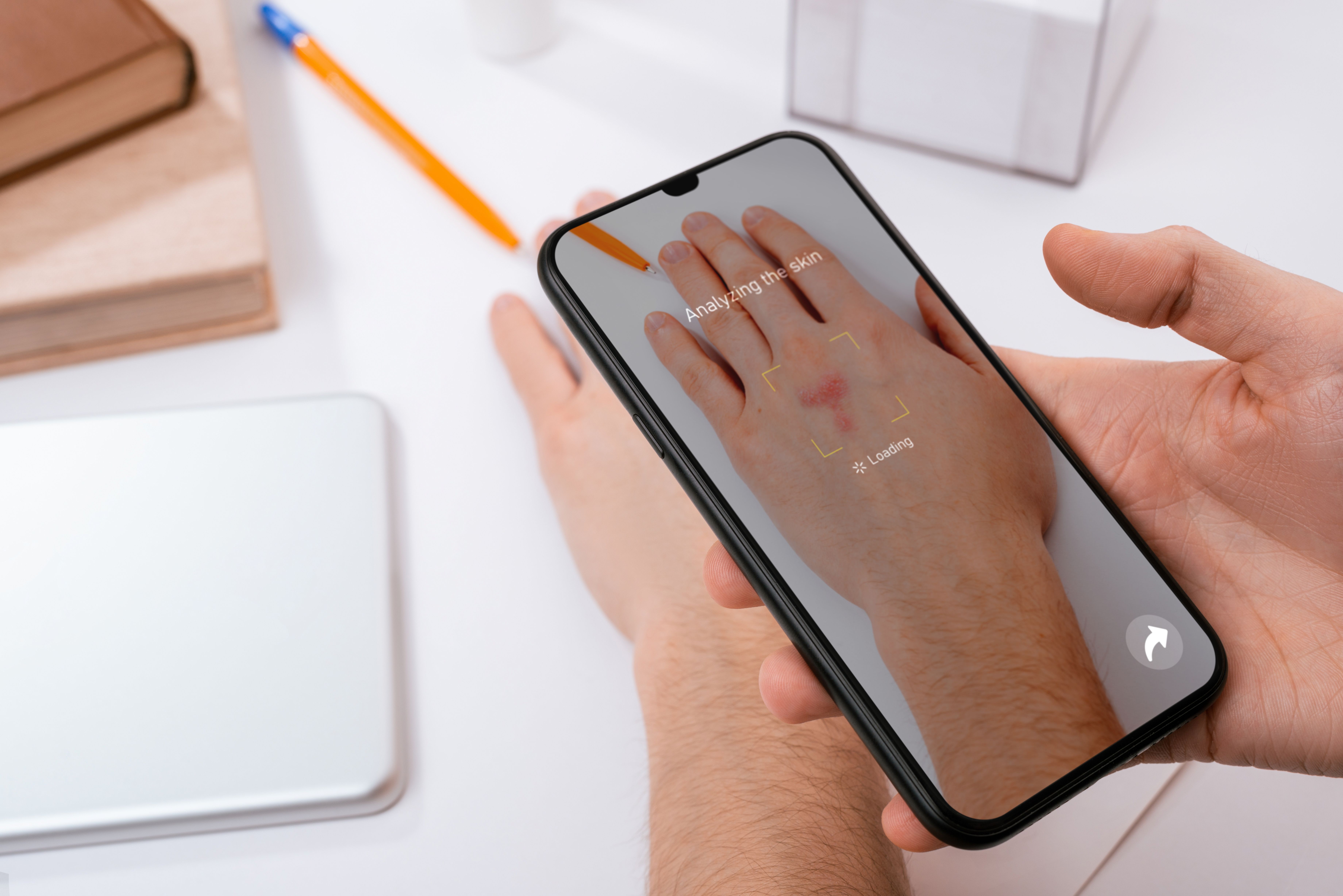- General Dermatology
- Eczema
- Alopecia
- Aesthetics
- Vitiligo
- COVID-19
- Actinic Keratosis
- Precision Medicine and Biologics
- Rare Disease
- Wound Care
- Rosacea
- Psoriasis
- Psoriatic Arthritis
- Atopic Dermatitis
- Melasma
- NP and PA
- Skin Cancer
- Hidradenitis Suppurativa
- Drug Watch
- Pigmentary Disorders
- Acne
- Pediatric Dermatology
- Practice Management
Artificial Intelligence Mode Demonstrates Accuracy in the Prediction of Skin Cancer Risk Using 2D Images
An XAI AI model using 2D facial images accurately predicted skin cancer better than traditional factors, according to a study advocating for AI-driven screening.
A network-based, neural, explainable artificial intelligence (XAI) approach showcased a superior capacity to predict skin cancer by analyzing two-dimensional (2D) facial images compared with other known risk factors, according to a recent study published in eClinicalMedicine.
Skin cancer is the most prevalent cancer affecting those with lighter skin tones. With rates of melanoma, basal cell carcinoma (BCC), and squamous cell carcinoma (SCC) on the rise—and with this trend expected to continue—improved detection of skin cancer is a pressing public health concern. Methods that lead to earlier detection can prompt the initiation of treatment and help patients avoid late-stage cancer progression.
The authors mention the inadequacies of current population-wide screening programs and how the development of patient-specific screening initiatives has remained challenging. In this realm, convolutional neural networks (CNN), a form of artificial intelligence (AI), have shown great promise for identifying skin cancer from images of skin lesions; however, data in this area has not been sufficiently explored. There is a great opportunity here, they add, to investigate the efficacy of AI analysis on personal facial images to unearth individual risk factors for skin cancer: age, signs of ultraviolet (UV) damage, and skin color. In theory, this model is easy to implement because it requires little effort and is unaffected by recall bias that may impact other screening approaches.
To expand on the available literature on AI in cancer detection, researchers used an XAI approach analyzing 2D facial images to evaluate the efficacy of this approach compared with more mainstream genetic and clinical risk factors for skin cancer.
Data were gathered from an ongoing, large, population-based, prospective cohort study known as the Rotterdam Study (RS). In this study, patients over the age of 50 years have been recruited and enrolled since 1990; additionally, participants had a thorough examination at baseline and underwent full-body skin examinations (FBSE) at study centers every 3-4 years. Follow-up continued until July 1, 2018.
In total, 4424 participants of the RS were included, 3371 of which had additional risk-factor assessment for developing skin cancer. Among the patients who underwent risk assessment, 789 (23.4%) were diagnosed with skin cancer. Within this group, 561 (71.1%) were diagnosed before their facial images were captured and 228 (28.9%) received a diagnosis following the collection of their facial images. Of the 288 participants, 11 were diagnosed with melanoma, 28 with SCC, and 163 with BCC. The average time to event (TTE) for these patients after facial images were taken was 971 days.
Survival analysis and risk prediction were achieved through cox proportional hazard regression (CPH), deep cox proportional hazards regression (DCPH), and deep convolutional cox proportional hazards regression (DCCPH). Patient ages, facial endophenotypes, and 18 known risk factors were explored for predictive measures.
Overall, the researchers’ XAI approach was more accurate (c-index: 0.72; 95% CI, 0.70-0.74) compared with the traditional assessment of risk factors (c-index: 0.59; 95% CI, 0.57-0.61). Significant associations were found between pigment status of patients (P = .47), baldness (P = .022), their number of naevi (P = .43), and Glogau wrinkle classification (P = .022). Additional collected data also revealed significant links between patients’ socioeconomic status (P = .04), history of living in a sunny country (P = .31), and their tendency to develop sunburns (P = .2).
The findings of this study demonstrate the benefits of applying deep-learning models to aid in the identification of skin cancer. As the authors conclude, they highlight the benefits of their AI-driven process to eliminate the need for lengthier questionnaires, DNA collection, in-person evaluation, and genotyping in patient screenings. To expand on this research in this area, the authors emphasize the importance of diverse population samples moving forward.
Reference
Liu X, Sangers TE, Nijsten T, et al. Predicting skin cancer risk from facial images with an explainable artificial intelligence (XAI) based approach: a proof-of-concept study. EClinicalMedicine. 2024;71:102550. doi:10.1016/j.eclinm.2024.102550
[This article was originally published by our sister publication, American Journal of Managed Care.]

